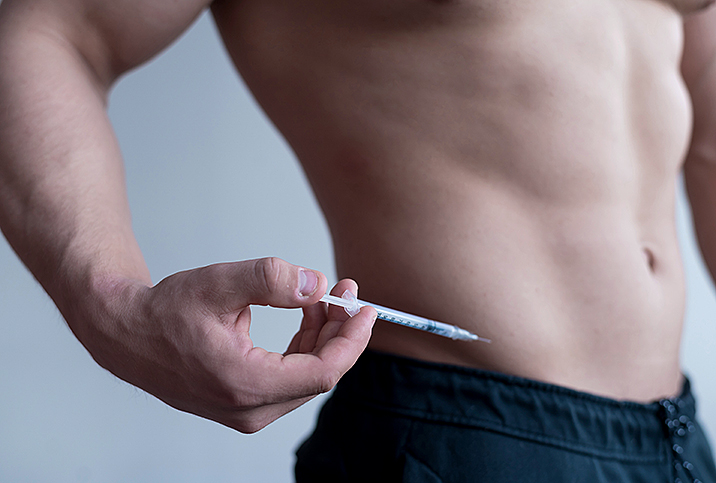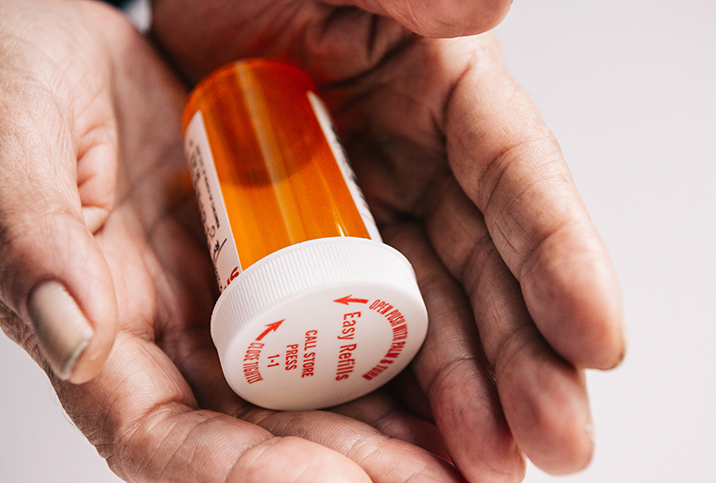Will Testosterone Therapy Make Me Sterile?

If a man is afflicted with hypogonadism, he has low levels of the main male sex hormone, testosterone, the lack of which can cause muscle loss, worsened mood and erectile dysfunction (ED). Testosterone replacement therapy is a first-line treatment for this disease, and it sounds like a simple fix: a couple of prescribed shots and a man should soon be halfway to feeling like an action-movie hero, right?
Testosterone treatment effectively increases muscle, stimulates sex drive and often restores erections. As with any treatment, testosterone replacement therapy comes with side effects, often reducing a patient’s sperm count and motility, which makes conceiving a child difficult.
What is a man with low testosterone to do to maintain his fertility? There are many options to discuss with a clinician: Treatment for hypogonadism is one option, and treatment of the ED itself may be another.
Signs & symptoms of hypogonadism
Men with hypogonadism make low levels of testosterone because the testes do not function well or do not receive enough stimulation from the brain. The primary causes of hypogonadism are aging, chronic disease and obesity.
One major study reported that 1 in 20 men over 30 years of age had symptomatic hypogonadism. Another study showed that as many as 1 in 7 men over 40 had low testosterone levels. This suggests that millions of men in the U.S. may be affected by this disease.
The signs and symptoms of hypogonadism include decreased muscle mass, increased abdominal fat, fatigue, sleep disturbance, increased bone fractures, worsened mood, lower sex drive (libido) and ED. Because testosterone levels and erectile function are strongly correlated, ED is often the symptom that drives the patient with hypogonadism to seek medical help.
The National Institutes of Health (NIH) classifies ED as an inability to achieve or maintain an erection that is satisfactory for sexual performance. ED, formerly known as impotence, affects about half of men older than 50, many of whom have low-T.
Treatment options
A logical and effective treatment for hypogonadism is to increase hormone levels with testosterone replacement therapy. This path is only taken after ensuring the patient does not have other hormonal diseases or any signs of prostate cancer, as these conditions may be worsened by increasing testosterone.
Patients usually inject or topically apply supplemental testosterone. According to the American Urological Association, about 1 to 3 percent of American men receive testosterone replacement therapy, and the number of men receiving this therapy has tripled in the past two decades.
As testosterone blood levels increase, symptoms of hypogonadism ease. Several testosterone replacement studies show that libido is improved, as is sexual and physical function, mood and erections. It also reduces depression and abdominal fat.
Side effects & fertility
Some side effects of this therapy include sleep apnea, swelling and urinary tract issues.
Unfortunately, testosterone treatment may also reduce sperm count, because the presence of additional testosterone tricks the body into believing it has produced enough of the hormone and no longer needs to create as much. This eventually may reduce sperm count and motility, until the patient becomes infertile.
Worryingly, one study suggested that up to one-third of men who are undergoing testosterone replacement do not actually qualify as testosterone deficient. That means a large number of men who are receiving this treatment and experiencing side effects such as infertility could be avoiding the risk altogether by seeking other treatments.
Patients may choose to treat their ED directly without hormones by taking established ED medications, such as sildenafil (Viagra) and tadalafil (Cialis). These ED medicines also come with side effects—changes in color vision, headaches and others—but they do not affect fertility.
If you’re considering or receiving testosterone therapy and you have concerns about fertility, schedule a talk with your doctor about all the treatment options for hypogonadism and ED. Don't have a doctor you see regularly? You should. Fortunately, telehealth makes it easy to connect with a doctor who can answer your questions and evaluate your situation. Many physicians offer video visits, which are a good way to see a doctor quickly since a lot of them have same-day appointments. Giddy telehealth is an easy-to-use online portal that provides access to hundreds of healthcare professionals whose expertise covers the full scope of medical care, including men's health.


















